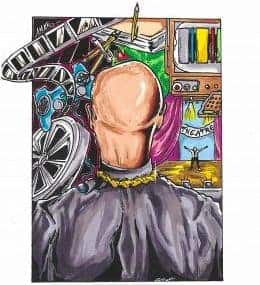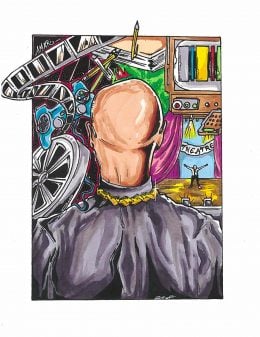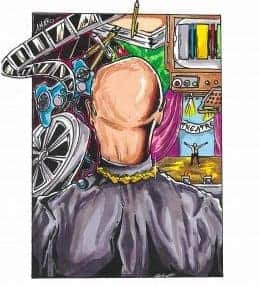Editorial Guidelines
How Are Posts Written?
Overview
A one to two-sentence summary either hinting at what happens or general feelings.
Production Information
Information such as the director(s), writer(s), genre, release date, advisory rating, duration, and actors are included for all new postings.
Summary or Recap
Within this section, either within five paragraphs or three headings, which usually have a combined total of 9 paragraphs, we break down notable storylines and what’s going on with various characters.
Things To Note | Other Noteworthy Information | Question(s) Left Unanswered | Discussion Items
If something was notable but just didn’t fit into the recap/ review, be it the age of a character or further information about something said, it will be placed here. Also, for some productions, there are topics left for future installments or for fans to debate amongst themselves. In this section, you’ll find questions worth keeping in mind for future entries into the series or for discussion in the comment section.
Collected Quote(s) & .Gifs
If there is a line or moment that has to be captured, it is placed within this section and also placed in a monthly post that holds the collected quotes and .gifs from the month.
Highlights
As the name implies, here there is a summary of the highlights. Be it certain storylines, an actor’s performance, how excited the author is about the show’s future, etc.
Low Points or Criticism
Here we write about some aspects of the production that can be frustrating or disappointing.
On The Fence
We believe there should be a gray area when talking about productions. Things that may depend on your taste, that could have been done better, or weren’t consistently good, are noted within this section.
Overall
The “Overall” section is used to summarize the information above and justify the category given. There is more on our rating system below.
Character Guides
The purpose of our character guides is for reference, and they generally include the character’s name and the actor’s name, alongside when they were first noted or introduced, a summary, and information revealed throughout the series or franchise.
Writing Style
Our writing style is intentionally conversational and designed to bridge the gap between casual fans and critics. We aim to make you feel like you’re talking to a friend or at least someone who understands that most people engage with media primarily for enjoyment. We embrace a more relaxed, down-to-earth perspective on entertainment.
That said, our style might not be for everyone. We don’t shy away from expressing our opinions, and at times, those opinions can be strong or even biased. Our writing has evolved over time, so if you browse through older reviews, you may notice a more raw or unpolished tone compared to what you see today.
We don’t believe in applying a “universal standard” to all productions. For instance, an HBO drama isn’t held to the same expectations as a Freeform teen series because they cater to different audiences with varying expectations. This means that a show praised here for its creativity or charm might not be viewed the same way in a broader, more critical context. Keep in mind that our perspective colors our reviews as fans, not professional critics, so what we highlight is often guided by our personal experiences and the enjoyment we found in the material.
One thing we can promise: we don’t “hate-watch.” Generally, if we’ve paid for something—whether it’s a streaming service subscription or a movie ticket—we’re watching it because we want to. If something falls under the “On The Fence” or “Criticism” category, it’s because we were let down by unmet expectations, whether due to marketing promises or the involvement of specific talent.
How Are Spoilers Handled?
While we may discuss key plot points to provide context for our commentary, we don’t provide exhaustive summaries or aim to spoil every detail. Characters or moments may be left out to avoid giving away surprises or because they don’t significantly impact the overall experience. If a plot twist or character development is a major talking point, we will mention it, but we focus on analysis and opinion rather than giving away every detail.
What’s Your Rating System?
While we use a percentage system for SEO purposes, staying true to our original concept that numbers aren’t the best method to rate a production, we continue using the labels Positive, Mixed, and Negative.
Each media type provides a different explanation per the production, be it a movie, TV series, or any of the other creative platforms we cover. For the majority of productions, the ratings are:
Positive
Positive-rated media are productions that meet or exceed expectations based on what was advertised and experienced.
Positive Rating Range: 80 and above (B to A+)
Recommended
A rating of 85 or higher qualifies a production for a recommendation. However, it’s up to our writers to decide whether something truly merits this distinction. That said, you may see something under 85 that is noted as recommended.
Recommended Rating Range: 85 and above
Mixed
Mixed-rated media have some flaws that might affect your enjoyment, but they can still be enjoyable overall.
Mixed Rating Range: 70 to 79.9 (C to C+)
Negative
This label is used sparingly for productions with one or two bright spots. However, it’s difficult to determine if the positives outweigh the overall experience for most viewers.
Negative Rating Range: 60 to 69.9 (D- to D+)
Note: A rating of 60 would require nearly all aspects of the production to be criticized, with very little to redeem it. As such, the “60” rating is rare and not frequently used.
And for episode-by-episode recaps, the ratings are:
Decline
Based on the show’s current trajectory, it’s important to question where the story is heading, the development of its characters, and the show’s long-term potential.
Decline Rating Range: 60–74
Plateau
At this point in the season, the show consistently meets expectations.
Plateau Rating Range: 75–82
Climbing
With new developments, the show is deepening its narrative and allowing its writers and performers to exceed expectations.
Climbing Rating Range: 83–100
Rating Factors
The main aspects we focus on are:
Characters: Are the characters well-developed as individuals? Are their aspirations clear and their personalities engaging? Do they have a distinct “hook”? How is the chemistry between the characters—do they show compatibility, or does it feel like casting was more about attracting attractive people or actors with name recognition?
World-Building: Does the production create a believable sense of culture? Is there a world beyond the lead(s) or ensemble, and does it feel fully realized?
Story Overall: Do the characters and their world form a cohesive whole? Are the obstacles they face compelling, and do they keep the journey toward a goal, resolution, or life chapter interesting throughout the production?
Pacing: Does the production overstay its welcome? Are any characters, themes, or storylines underdeveloped? Does it take too long to get hooked, or does it rely too heavily on a particular character or element (e.g., star power) to keep you engaged?
Diverse Hooks: If one element doesn’t resonate, does the production offer alternatives to engage viewers? Is the film tailored to a specific audience in terms of humor, writing, or performances? For example, does it appeal to fans of subversive indie films, or is it more commercial and aimed at a mainstream audience?
(Re)Watch Value: Is it worth recommending to others who haven’t seen it? Would you watch it again, either with someone else or on your own?
Disclosure Policy
Wherever I Look is a website that accepts screeners and works with marketing teams and ad networks to produce content consistently.
Please note that Wherever I Look has financial relationships with some of the merchants and may be compensated monetarily or with products if consumers choose to utilize the links throughout the site’s content and generate sales for the said merchant.
At Wherever I Look, though the owner and writers of this website may receive compensation or free access to materials or events, our reviews and experiences are honest and are expressly the writers’ own.
We participate in the Amazon Services LLC Associates Program, an affiliate advertising program designed to provide a means for us to earn fees by linking to Amazon.com and affiliated sites. We also work with Impact, which offers an affiliate advertising program with many streaming platforms.
This website does not contain any content which might present a conflict of interest.
If you have any questions regarding this disclaimer or editorial guidelines, you can email Contact@wherever-i-look.com


